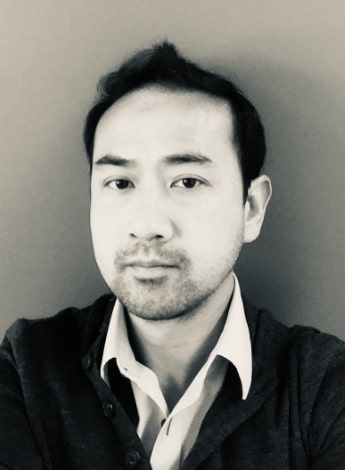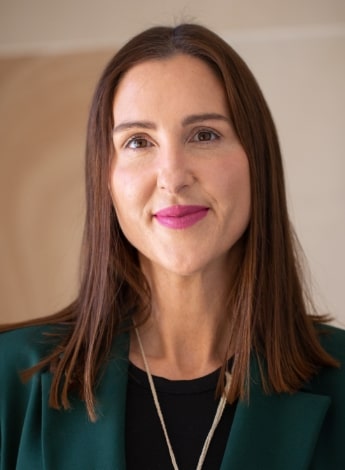
Strength in alignment

University educators and clinicians Jacqueline North, Associate Professor Michael Lee and Dr Roma Forbes reflect on industry partnerships with physiotherapy education providers and urge the profession to consider the mutual benefits of a co-design model.
Universities that provide physiotherapy education and the broader physiotherapy profession should seek to develop sustainable and mutually beneficial educational partnerships.
We believe that a co-design model of engagement would be valuable to students, clinicians, universities and, ultimately, the profession.

Jacqueline North
Collaboration between universities and industry has traditionally focused on clinical placement partnerships, in which consultation with industry leaders contributes to university curricula and collaborative research.
Within this model, some professional development is provided to clinicians by universities but this primarily relates to supervisory skills for clinical placement provision.
The interaction is often unidirectional—industry provides expertise in a somewhat isolated manner, potentially leading to a disconnect between university curricula and the needs of clinical practice.
This traditional model lacks the capacity for development or responsiveness over time in our ever-changing profession.
Another issue is that clinical placements occur in the later stages of student education, which limits opportunities for clinicians to contribute to the development or delivery of the broader curriculum.
By contrast, a co-design model would engage industry and clinicians early and continue that engagement throughout the continuum of physiotherapy education, from curriculum development to academic teaching.
Curricula that is co-designed by university and industry partners, supported by structures for educators and clinicians, fosters ongoing dialogue and shared expertise.
Key principles of co-design
(Beacon Strategies 2023)
Participation
Participation in co-design relies on diverse perspectives from professionals, universities and healthcare consumers.
Transparency about resources, requirements and expected outcomes is vital.
Effective collaboration also requires up-front decisions about expectations, remuneration, meeting frequency and curriculum outcomes.
Development
In the co-design process, clinicians and universities jointly define student and healthcare needs, the teaching environment, required resources, curriculum goals and methods of achieving them.
Clinicians contribute both to delivering the curriculum and to evaluating the program, ensuring continuous improvement.
Ownership and power
The co-design model values expertise from all stakeholders, emphasising mutual respect and shared decision-making.
Employing co-facilitators from both sectors ensures active involvement in all stages of curriculum planning, development and implementation by clinicians and university members alike.
Outcomes and intent
Outcomes for the curriculum must be clear and realistic, with all participants working together to enhance educational and professional practices within physiotherapy.
Benefits of a co-design strategy
The co-design model has the potential to provide both the physiotherapy industry and universities with numerous benefits.

Associate Professor Michael Lee
Clinicians would upskill in teaching, enhancing their ability to educate colleagues and students within the workplace.
The involvement of clinicians in academic curriculum development and delivery could improve strategies to prepare students for clinical placements (Gibson & Palermo 2021), along with increasing the work readiness of physiotherapy graduates by ensuring that the curriculum is responsive to industry needs.
This model also supports the research endeavours and professional development of clinicians, with potential improvements in clinical service delivery.
Universities would benefit greatly if industry insights from the field, including practical knowledge and case studies,
were integrated into academic coursework.
Bringing real-world experiences directly into educational settings could unlock the ‘hidden curriculum’ within healthcare and promote authenticity (Gibson & Palermo 2021), while aligning industry needs with curriculum design and delivery could
allow for tailored learning for students.
A co-design model would help identify the essential skills demanded by the healthcare industry and allow for the subsequent adaptation of coursework.
A sustainable reciprocal partnership
To be successful in the long term, a co-design model needs to be mutually beneficial and customisable.
We propose joint clinical and academic appointments that provide clinicians with time and recognition for their scholarly activities and their clinical work.
Support systems for clinicians would be needed, including professional development and the creation of an educator community of practice (Roberts et al 2014).
Professional development should focus on a clinician’s development as a teacher and curriculum designer.

Dr Roma Forbes
This support should be tailored to the needs of individuals but could include access to modules or workshops offered by universities, peer feedback and mentoring programs within academic settings, and support and funding for formal health professional or higher education qualifications and/or teaching fellowships.
Building a community of practice for clinicians interested in education would support the development of their skills, facilitate collaboration and cultivate their identities as educators (Roberts et al 2014).
Involving clinicians in established education communities of practice at universities and funding membership to relevant health education associations such as the Australian and New Zealand Association for Health Professional Educators or the International Association for Health Professions Education would promote their active participation in the education community.
Challenges
Transitioning to a co-design model is not without challenges.
It requires a cultural shift in both academia and industry, with a focus on open communication, mutual respect and shared goals.
For sustainability and longevity, a genuinely reciprocal partnership must be adopted.
There are barriers to involving clinicians in university education and it is not a one-size-fits-all model.
However, with support systems in place and strong partnerships between healthcare facilities and universities, the co-design model can diversify the skills of clinicians, enrich the learning experience for students and better prepare them for the health workforce.
Quick links:
>>Jacqueline North APAM is a lecturer at the University of New South Wales and a cardiorespiratory physiotherapist at Prince of Wales Hospital. Jacqueline has extensive experience working with clinicians to develop physiotherapy and medical curriculum.
>>Associate Professor Michael Lee APAM is the head of physiotherapy at the University of New South Wales. Michael’s research focuses on improving the functional outcomes of neurorehabilitation using artificially intelligent robots.
>>Dr Roma Forbes APAM is a physiotherapist and a senior lecturer at the University of Queensland. Roma’s research explores graduate preparedness for clinical practice.
© Copyright 2025 by Australian Physiotherapy Association. All rights reserved.





